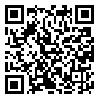Tue, Dec 2, 2025
[Archive]
Volume 11, Issue 31 (2018)
JMED 2018, 11(31): 75-84 |
Back to browse issues page
Download citation:
BibTeX | RIS | EndNote | Medlars | ProCite | Reference Manager | RefWorks
Send citation to:



BibTeX | RIS | EndNote | Medlars | ProCite | Reference Manager | RefWorks
Send citation to:
Azizi S M, Farajollahi M, Seraji F, Khatony A, Sarmadi M R. Application of Features of Virtual Curriculum Components of Virtual Courses in Medical Sciences. JMED 2018; 11 (31) :75-84
URL: http://edujournal.zums.ac.ir/article-1-990-en.html
URL: http://edujournal.zums.ac.ir/article-1-990-en.html
Seyyed Mohsen Azizi *1  , Mehran Farajollahi2, Farhad Seraji3, Alireza Khatony4, Mohammad Reza Sarmadi5
, Mehran Farajollahi2, Farhad Seraji3, Alireza Khatony4, Mohammad Reza Sarmadi5
 , Mehran Farajollahi2, Farhad Seraji3, Alireza Khatony4, Mohammad Reza Sarmadi5
, Mehran Farajollahi2, Farhad Seraji3, Alireza Khatony4, Mohammad Reza Sarmadi5
1- Clinical Research Development Center of Imam Reza Hospital, Kermanshah University of Medical Sciences, Kermanshah, Iran. , smohsenazizi@yahoo.com
2- Department of Educational sciences, Payame Noor University, Tehran, Iran
3- Department of Educational sciences, Bu-Ali Sina University, Hamedan, Iran
4- School of nursing and midwifery, Kermanshah University of Medical Sciences, Kermanshah, Iran
5- Department of Educational Sciences, Payame Noor University, Tehran, Iran
2- Department of Educational sciences, Payame Noor University, Tehran, Iran
3- Department of Educational sciences, Bu-Ali Sina University, Hamedan, Iran
4- School of nursing and midwifery, Kermanshah University of Medical Sciences, Kermanshah, Iran
5- Department of Educational Sciences, Payame Noor University, Tehran, Iran
Abstract: (18266 Views)
Background & Objective: With regard to the quantitative expansion of virtual education in universities of medical sciences, the quality and coordination of curriculum with features of virtual education environment must be considered. Therefore, this study aimed to evaluate the application of features of virtual curriculum components in virtual education courses in medical sciences.
Materials and Methods: This descriptive and cross sectional study was conducted on all virtual MSc students of Tehran and Shahid Beheshti Universities of Medical Sciences, Iran. Sample size was estimated at 140 using Cochran sample size formula, and subjects were selected by stratified random sampling. Data were collected using a researcher-made questionnaire, the validity of which was evaluated and confirmed using CVA and CVR indexes. In addition, the reliability of the research tool was estimated at the Cronbach’s alpha of 0.77. Moreover, data analysis was performed in SPSS version 19 using one sample t-test.
Results: In this study, the mean features of objective, content, role of e-instructor and assessment components in the virtual courses in medical sciences was at a relatively realized level (2.33-3.66).
Conclusion: Curriculum designers and specialists can review the curriculum design of virtual courses in medical sciences based on the features of the virtual curriculum components.
Materials and Methods: This descriptive and cross sectional study was conducted on all virtual MSc students of Tehran and Shahid Beheshti Universities of Medical Sciences, Iran. Sample size was estimated at 140 using Cochran sample size formula, and subjects were selected by stratified random sampling. Data were collected using a researcher-made questionnaire, the validity of which was evaluated and confirmed using CVA and CVR indexes. In addition, the reliability of the research tool was estimated at the Cronbach’s alpha of 0.77. Moreover, data analysis was performed in SPSS version 19 using one sample t-test.
Results: In this study, the mean features of objective, content, role of e-instructor and assessment components in the virtual courses in medical sciences was at a relatively realized level (2.33-3.66).
Conclusion: Curriculum designers and specialists can review the curriculum design of virtual courses in medical sciences based on the features of the virtual curriculum components.
Article Type : Orginal Research |
Subject:
Education
Received: 2018/01/7 | Accepted: 2018/11/13 | Published: 2019/01/3
Received: 2018/01/7 | Accepted: 2018/11/13 | Published: 2019/01/3
Send email to the article author
| Rights and permissions | |
 |
This work is licensed under a Creative Commons Attribution-NonCommercial 4.0 International License. |




